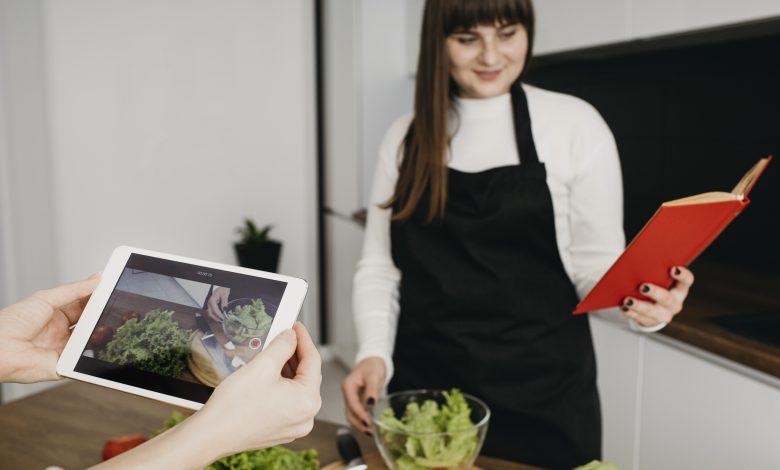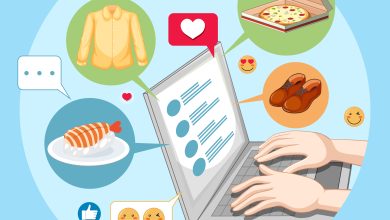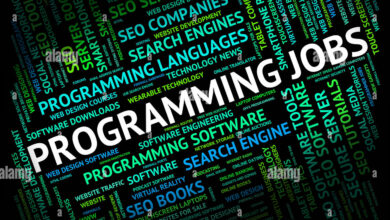Becoming a Virtual Food Stylist: Tips and Tricks How to Offer Online Meal Planning Services from Home

As social media and food photography continue to grow in popularity, the demand for food stylists has expanded online. Becoming a virtual food stylist offers a flexible, creative, and profitable way to work with clients and help brands showcase their culinary creations. Virtual food stylists assist with planning, presentation, and visual storytelling from a remote setup, making it a viable career option for those passionate about food and aesthetics. Here are tips and tricks for becoming a successful virtual food stylist.
1. Understand the Role of a Virtual Food Stylist
A virtual food stylist works remotely to create, plan, and advise on food presentation for brands, influencers, and food photographers. The goal is to enhance the food’s appeal by focusing on aspects like colour, texture, and layout, ultimately making it more appetising to viewers.
Responsibilities of a Virtual Food Stylist:
- Planning visual layouts and themes for food shoots.
- Advising on plating, ingredient placement, and lighting for optimal visual appeal.
- Collaborating with photographers, content creators, and brands to align with specific brand aesthetics.
- Providing digital guidance on presentation techniques to chefs, influencers, and marketing teams.
Virtual food stylists typically work with clients over video calls, share digital mood boards, and offer feedback on food presentations through visual aids.
2. Develop Core Food Styling Skills
Becoming a virtual food stylist requires specific skills to deliver high-quality results, even from a distance. These skills allow you to make food look as good as it tastes.
Core Skills for Food Styling:
- Creativity: Developing unique presentation ideas, understanding colour theory, and experimenting with textures.
- Attention to Detail: Focusing on the small elements that bring out the best in each dish, like garnishes, sauces, and lighting.
- Photography Knowledge: Understanding how lighting, angles, and composition affect how food appears in photos.
- Knowledge of Ingredients: Knowing which ingredients work best visually and understanding their shelf life, texture, and visual appeal.
These skills are crucial for making food look fresh, delicious, and visually captivating, helping to enhance brand presence and appeal to customers.
3. Create a Portfolio to Showcase Your Work
A professional portfolio is essential for attracting clients as a virtual food stylist. This can include past work, styled mock-ups, or before-and-after images of food presentations. A strong portfolio demonstrates your skills and gives potential clients confidence in your ability to elevate their brand.
Building a Food Styling Portfolio:
- Use Social Media: Platforms like Instagram and Pinterest are perfect for showcasing food styling work and attracting clients.
- Include a Range of Styles: Show versatility by styling various foods, from desserts and beverages to main courses and appetisers.
- Highlight Before-and-After Shots: Displaying transformations shows the impact of your work and illustrates your food styling skills.
- Create a Digital Portfolio: A professional website with high-resolution images, testimonials, and a contact page will help you stand out.
An attractive portfolio is key to establishing credibility and gaining clients in the virtual food styling world.
4. Invest in Technology and Tools for Virtual Styling
Working virtually requires the right technology to communicate with clients effectively. High-quality visuals, reliable video conferencing, and file-sharing tools are essential for offering a smooth virtual styling experience.
Essential Tools for Virtual Food Stylists:
- High-Quality Camera: Capture professional-looking images for clients or tutorials.
- Video Conferencing: Platforms like Zoom or Google Meet enable remote consultations and visual feedback.
- Digital Mood Boards: Use tools like Canva, Pinterest, or Milanote to create and share styling concepts and ideas.
- File Sharing Platforms: Google Drive or Dropbox makes it easy to share images, feedback, and documents.
Investing in these tools enhances communication with clients and ensures you can deliver a high-quality experience remotely.
5. Offer Remote Food Styling Packages
Consider offering specific packages to make your services easier for clients to understand and book. Offering different pricing tiers can attract a variety of clients, from small brands to larger businesses.
Examples of Virtual Food Styling Packages:
- Basic Consultation: Provide a one-time consultation with tips, mood boards, and visual guides.
- Ongoing Styling Support: Offer clients regular styling assistance, from planning to feedback on food presentations.
- Customised Shoot Packages: Help clients with specific photo shoots, including remote guidance, mood boards, and styling suggestions.
Having clear packages makes it easier for clients to choose a service that fits their needs, boosting your chances of securing regular work.
How to Offer Online Meal Planning Services from Home
Meal planning services are increasingly in demand as people seek guidance on nutrition, convenience, and dietary preferences. Offering online meal planning services from home is a flexible and profitable way to help clients achieve their health goals or manage their dietary needs. Here’s how to create a successful meal planning service.
1. Understand What Online Meal Planning Entails
Online meal planning involves creating customised meal plans based on a client’s dietary goals, restrictions, and preferences. As a meal planner, you’ll work closely with clients to create balanced, appealing, and manageable meal schedules that fit their lifestyle.
Common Services in Meal Planning:
- Custom weekly or monthly meal plans tailored to the client’s dietary goals.
- Recipes, grocery lists, and preparation tips.
- Nutritional guidance to support specific dietary needs, like weight loss, veganism, or gluten-free diets.
- Regular check-ins to track progress and adjust plans as needed.
Providing a range of meal planning options can help you reach a wider audience with different dietary needs and goals.
2. Build a Strong Knowledge Base in Nutrition
Having a basic understanding of nutrition and dietary needs can improve the quality of your meal plans and build client trust. Consider completing a course or certification in nutrition if you don’t already have experience in this area.
Key Nutrition Knowledge Areas:
- Macronutrient balance (proteins, carbohydrates, and fats).
- Special diets like ketogenic, vegan, or gluten-free.
- Portion control and meal timing.
- Basic knowledge of vitamins, minerals, and food groups.
A solid foundation in nutrition will help you create well-rounded meal plans and provide clients with valuable information on achieving their goals.
3. Create Digital Resources for Your Clients
As an online meal planner, offering downloadable resources can make it easier for clients to follow their meal plans. These resources also add value to your service and can increase client satisfaction.
Digital Resources to Offer:
- Weekly Meal Plan Templates: Customisable meal plans with specific recipes and portion sizes.
- Shopping Lists: Clear, organised lists that make grocery shopping efficient.
- Recipe Cards: Provide detailed, printable recipes that are easy to follow.
- Meal Prep Guides: Tips on preparing ingredients ahead of time to make daily cooking easier.
Offering these resources enhances the client experience and makes your service more comprehensive and valuable.
4. Develop an Easy-to-Use Booking and Payment System
Creating a seamless booking and payment system simplifies the process for both you and your clients. Use an online scheduling tool to manage consultations and a secure payment system to process transactions.
Recommended Tools:
- Booking Platforms: Calendly or Acuity Scheduling allow clients to book appointments based on your availability.
- Payment Processors: Use PayPal, Stripe, or Square for secure online payments.
- Email Communication: Set up automated emails to send clients their plans, reminders, and follow-ups.
An efficient system makes it easy for clients to engage with your services and helps you manage appointments and payments smoothly.
5. Promote Your Services and Build a Client Base
Marketing your meal planning services is essential to attract clients and grow your business. Use social media, your website, and content marketing to reach your target audience.
Promotion Tips:
- Social Media Marketing: Share sample meal plans, recipes, and client success stories on platforms like Instagram and Facebook.
- Content Marketing: Start a blog or YouTube channel to share meal planning tips, which can drive traffic to your website.
- Email Marketing: Send out a newsletter with recipe ideas, meal prep tips, and special offers to keep clients engaged.
- Collaborate with Influencers: Partner with fitness trainers or health bloggers to expand your reach and credibility.
Consistent promotion and engagement help you build a loyal client base, positioning you as a trusted meal planning expert.
Conclusion
Becoming a virtual food stylist or an online meal planner offers flexible and profitable opportunities in the culinary industry. By building a strong portfolio, investing in the right tools, and continuously promoting your services, you can create a successful online business from home. Both roles allow you to share your passion for food and aesthetics while helping clients achieve their culinary or dietary goals. Embrace these tips, develop your skills, and get ready to bring your expertise to a global audience.





